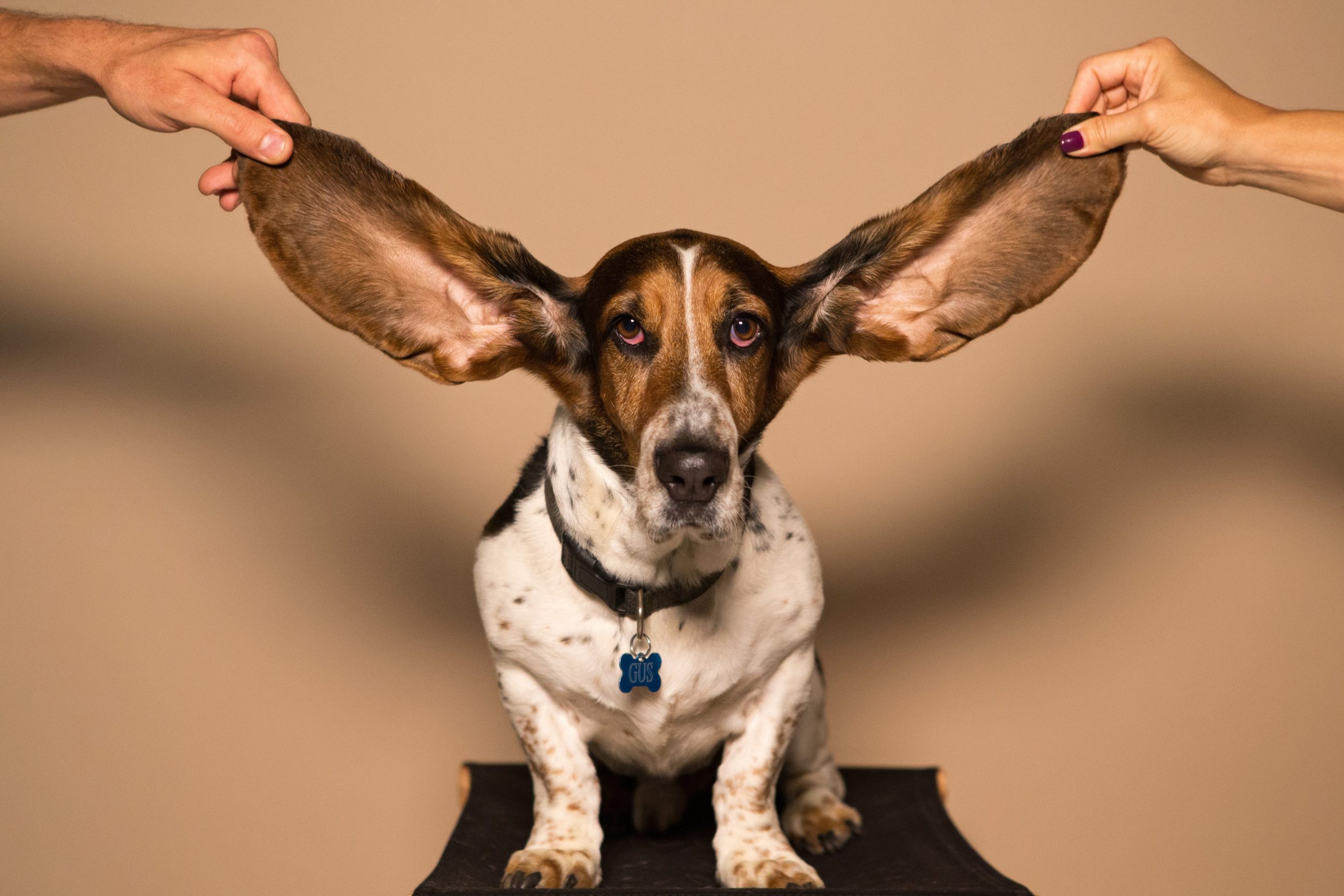Preventing Ear Infections in Dogs: A Guide to Maintaining Good Ear Hygiene
This article provides a comprehensive guide on preventing ear infections in dogs, including understanding the different types and causes of infections, recognizing the signs, preventive measures, best practices for cleaning ears, and seeking veterinary care when needed.
Understanding Ear Infections in Dogs
When it comes to understanding ear infections in dogs, it’s essential to recognize the different types that can affect our furry friends. Otitis externa, which is the most prevalent type, impacts the external ear canal, while otitis media and otitis interna affect the middle and inner ear, respectively. For instance, otitis externa is often linked to swimming or bathing, as water and moisture can become trapped in the ear canal, creating a conducive environment for bacterial or yeast overgrowth. On the other hand, otitis media and otitis interna can result from untreated otitis externa or other underlying factors such as foreign objects or tumors in the ear canal.
Moreover, various factors can contribute to ear infections in dogs, including allergies, damp ears, parasites, waxy build-up, diseases, irregular ear anatomy, and physical trauma. For example, certain breeds, especially those with floppy ears and hairy ear canals, are more prone to ear infections due to reduced airflow and increased moisture retention, making it crucial for owners of these breeds to be vigilant about ear care and hygiene. By understanding the different types and causes of ear infections, dog owners can take proactive steps to prevent and address these issues, ensuring the well-being of their canine companions.
Recognizing the Signs of Ear Infections
Recognizing the signs of ear infections in dogs is vital for maintaining their overall health and well-being. Excessive scratching, head shaking, and red or swollen ear canals are common signs that indicate a potential ear infection. For instance, if you notice your dog scratching its ears more frequently than usual, or vigorously shaking its head, it could be a sign of discomfort in the ear. Additionally, a foul odor or abnormal discharge from the ears are also indicators of a possible ear infection. If you observe your dog avoiding physical contact or showing signs of pain when you pat their ears, it’s important to consider the possibility of an ear infection and seek veterinary care promptly.
Early detection of these signs is crucial as it can prevent the condition from worsening and causing further discomfort to the dog. A prompt veterinary examination can help in accurately diagnosing the ear infection and initiating appropriate treatment to alleviate the dog’s discomfort. It’s important for dog owners to be proactive in observing these signs and taking necessary action to ensure their pet’s ear health.
Preventive Measures for Ear Infections
Preventing ear infections in dogs involves several key measures. One important factor to consider is the control of parasites. For example, dogs that spend time outdoors, especially hunting breeds, are more prone to ear infections due to increased exposure to parasites like ticks and mites. Regular use of vet-recommended parasite control products can significantly reduce the risk of ear infections in these dogs. Additionally, keeping the ears dry is crucial for preventing infections. Certain dog breeds with floppy ears, such as Cocker Spaniels and Basset Hounds, are more susceptible to moisture accumulation in their ear canals, creating an ideal environment for the growth of bacteria and yeast that can lead to infections. Therefore, ensuring the ears are thoroughly dried after bathing or swimming can help minimize the risk of ear infections.
Identifying and removing allergens that may trigger reactions in dogs is another essential preventive measure. Some dogs may have allergies to pollen, dust mites, or certain foods, which can manifest as ear inflammation and itching, potentially leading to infections. By working with a veterinarian to identify and manage the allergens affecting the dog, pet owners can effectively reduce the likelihood of ear infections caused by allergic reactions. Moreover, regular ear cleaning using vet-approved solutions is a fundamental practice for maintaining good ear hygiene and preventing infections. This practice is especially important for dogs prone to ear infections due to their anatomy or breed, such as Cocker Spaniels, Labrador Retrievers, and Poodles. Using a reliable ear cleansing solution and cleaning the dog’s ears once every 1-2 weeks can help remove excess wax and debris, effectively reducing the risk of infections.
By implementing these preventive measures, dog owners can significantly minimize the occurrence of ear infections, contributing to the overall well-being and comfort of their pets.
Best Practices for Cleaning Your Dog’s Ears
To maintain good ear hygiene and prevent ear infections in dogs, it is essential to understand the recommended frequency for cleaning a dog’s ears. For most dogs, it is generally advised to clean their ears once every 1-2 weeks to minimize the risk of ear infections. However, some dogs, especially those prone to ear infections, may require more frequent cleanings to effectively prevent issues.
When it comes to cleaning a dog’s ears, following a proper and systematic approach is crucial. This involves preparing the necessary cleaning supplies, such as a vet-approved ear cleaner and cotton balls, to ensure a thorough yet gentle cleaning process. After preparing the supplies, it’s important to expose the ear canal, apply the cleaning solution, and gently massage the ear to dislodge any dirt or debris. Allowing the dog to shake its head afterward helps in removing excess solution and dislodged debris from the ear canal, contributing to a more effective cleaning process.
In addition to the cleaning process, the choice of ear cleaner plays a pivotal role in preventing ear infections. Using a vet-approved ear cleaner with antibacterial or antifungal properties can be especially beneficial for dogs prone to ear infections, as it helps in maintaining the ear’s natural balance and preventing the overgrowth of harmful microorganisms. Moreover, avoiding over-cleaning is equally important, as excessive cleaning can lead to irritation and disrupt the ear’s natural protective mechanisms, potentially increasing the risk of infection. Therefore, following the best practices for cleaning a dog’s ears not only supports good ear hygiene but also aids in the prevention of common ear issues in dogs.
Seeking Veterinary Care for Ear Infections
When you notice symptoms such as redness, frequent heavy debris, or an unusual odor in your dog’s ears, it’s essential to seek veterinary care immediately to prevent the condition from worsening. A vet can conduct a thorough examination to diagnose the issue accurately and recommend the most effective treatment. For instance, if the ear infection is caused by allergies, the vet may prescribe medications to alleviate the allergic reaction and prevent further complications.
Furthermore, veterinarians have the expertise to identify the specific type of ear infection your dog may be experiencing, whether it’s otitis externa, otitis media, or otitis interna. This knowledge is crucial as different types of ear infections may require different treatment approaches to ensure your dog’s recovery. Additionally, the vet can guide you on the potential preventive measures to reduce the likelihood of future ear infections, such as maintaining proper ear hygiene and controlling parasites. Therefore, consulting a vet not only addresses the current infection but also helps in establishing preventive strategies for your dog’s long-term ear health.
Conclusion
In conclusion, it is crucial for dog owners to prioritize ear care as a fundamental aspect of their pet’s overall well-being. By following a simple regimen of preventative care, such as regular ear cleaning and prompt veterinary care, the risk of ear infections in dogs can be significantly reduced. For instance, using a reliable ear cleansing solution and cleaning a dog’s ears once every 1-2 weeks, or any time they get wet, can greatly contribute to preventing ear infections.
Furthermore, it is important to understand that certain breeds, especially hunting breeds, are more prone to ear infections. These breeds include Cocker Spaniels, Retrievers, and Basset Hounds. For such breeds, more frequent ear cleaning may be necessary to reduce the risk of ear infections. By taking preventive measures and maintaining good ear hygiene, dog owners can significantly contribute to their pet’s health and comfort, ensuring a happy and infection-free life for their loyal companions.
Encouraging responsible pet ownership, including regular ear inspections and cleaning, can go a long way in maintaining the health and happiness of dogs. By being proactive and attentive to the needs of their furry friends, dog owners can prevent unnecessary pain and discomfort associated with ear infections, and ultimately, promote a higher quality of life for their beloved pets.



